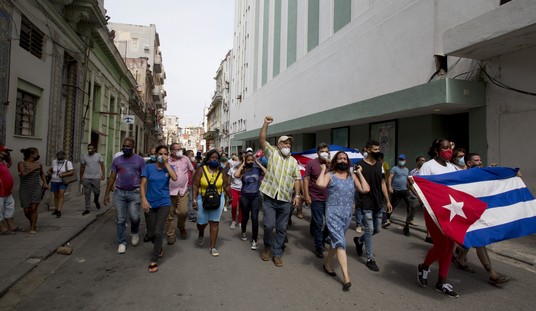Some Western readers were probably surprised to hear that Iran was deporting more than a million Afghans alone in 2025:
At the sand-swept border between Iran and Afghanistan, nearly 20,000 are crossing every day — shocked and fearful Afghans who have been expelled from Iran with few belongings in a wave of targeted crackdowns and xenophobia. More than 1.4 million Afghans have fled or been deported from Iran since January during a government clampdown on undocumented refugees, according to the United Nations’ refugee agency.
It must be similarly strange to those accustomed to accounts of the villainy of ICE to read that Pakistan is deporting millions of Afghans to Afghanistan.
Vast deportations are occurring everywhere, not just the well-publicized operations in the United States. And even when the expulsions are relatively low in number, as in Europe, there are widespread anti-immigrant riots:
“A person has been arrested after dozens of protesters gathered for the second time outside an Essex hotel believed to house asylum seekers,” proclaimed newspapers in the UK. “Spanish police detain eight people after anti-migrant clashes in Torre-Pacheco,” was news in Spain. “Anti-immigrant rallies staged across Poland,” said the BBC. And in Asia, “'Japanese First' party emerges as election force with tough immigration talk.”
What’s driving this? It isn't "MAGA meanness." It’s too widespread for that. The trend against mass migration and the return of national borders reflects a raising of the drawbridge against the rising tide of chaos amidst the perceived failure of governance. The crises of the borders imply not that intolerance has spread in the racist West, but that the globe is being convulsed by uncertainty. The backlash against migration is a result of the problem, not its cause.
Borders, like naval watertight compartmentization, are risk management tools. Once risk seemed low. After the fall of the USSR, in the unipolar era, there seemed to be no cloud on the horizon, and the world could sail hatches open (condition X-Ray in naval parlance). Europe enacted Schengen. The “Global World” was the future. Open borders didn't seem too crazy.
Then came 9/11 and the renewal of the Cold War. As if that were not enough, the COVID pandemic broke out in 2019. Now, some countries are going to condition Y. They are dogging the hatches, reshoring industries, and securing vital supply chains. Some are even going to condition Z, familiar to us from the movies as General Quarters or Battle Stations. As in those sinking-ship dramas, they are preparing to pump out water — or, in this case, the illegal migrants.
What risks are countries trying to mitigate? Clearly, one fear in Europe and the prosperous Pacific Rim is population collapse. Many European countries have fertility rates below the replacement level of 2.1 children per woman (often 1.3–1.6). North Asia tells the same story. Japan’s fertility rate is around 1.2–1.4, with a rapidly aging population (over 29% are 65+).
China’s one-child policy (1979–2015) drastically reduced fertility rates, now around 1.1–1.3. A skewed sex ratio from selective abortions (favoring males) has led to a surplus of men, reducing marriage rates. An aging population (projected 400 million over 60 by 2040) strains pension systems. China is in trouble. Even Russia, though far from prosperous, is in danger of demographic Armageddon. Fertility rates hover around 1.5–1.6, and the working-age population, already shrinking, is beset by the emigration of young professionals and the great dying on the Ukraine battlefields. The situation is so serious that the liberal media is actually concerned. As Marc Novicoff put it in the Atlantic, “The birth-rate crisis isn’t as bad as you’ve heard—it’s worse.”
The old cultures are frightened to death of being hollowed out and also of the multitudes milling about. At the end of 2024, the global number of forcibly displaced people reached 123.2 million, seemingly from nowhere. The biggest atrocities worldwide are being committed by people you have never heard of on victims nobody knows in places nobody visits. RSF has committed genocide against the Massalit, Fur, and Zaghawa in Zamzam, Darfur, and caused 150,000 deaths, with 12 million displaced nationwide. The global population of displaced people has nearly doubled over the past decade. These multitudes have got to go somewhere.
But there is an uncertainty that even walls cannot stop. Something in the zeitgeist has changed. Culturally, we have gone from the late 20th-century world of deterministic ideologies to one of emergent complexity and surprise. It’s hard now to believe that figures like Che Guevara once believed that socialism would come with religious certainty or that The End of History and the Last Man seemed like a practical map of the future in 1992. How could pundits have been so sure?
Recommended: Belmont Club: The Red Sea Sharks
The popularity of Liu Cixin's "The Three-Body Problem" on Netflix seems a sign of the times. The "three-body problem," which forms the motif of its plot, belongs to a class of problems that cannot be predicted when the initial conditions are not precisely known. The message running through it is: We don’t know what the future is, and, what is worse, we cannot know even in principle what the future will be.
We huddle behind our walls, suddenly fearful of the complexity we’ve created, knowing it can evolve without warning into a catastrophic state due to emergent behaviors, feedback loops, or unintended consequences that we can’t predict. The wisest of our leaders know that borders can’t completely stop what’s out there, only slow it down. Slow it down to give us time to figure something out.










